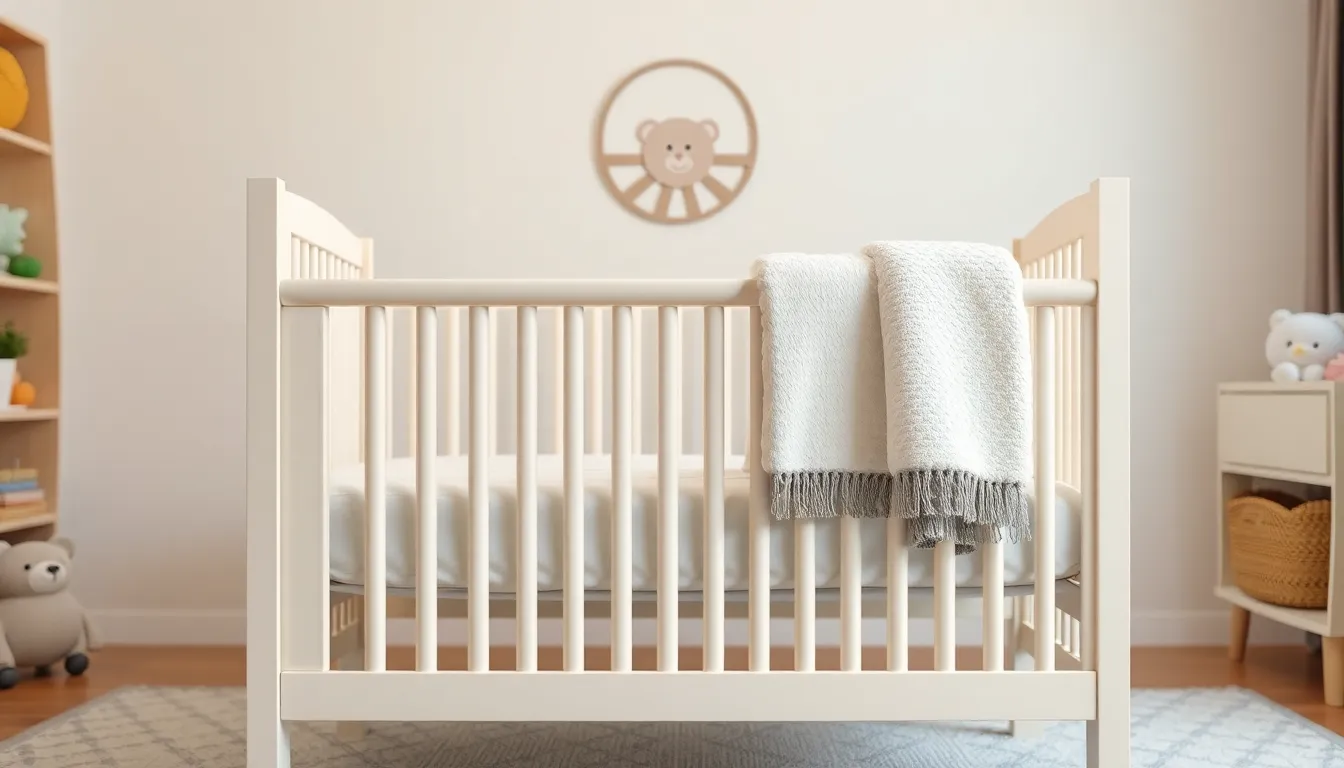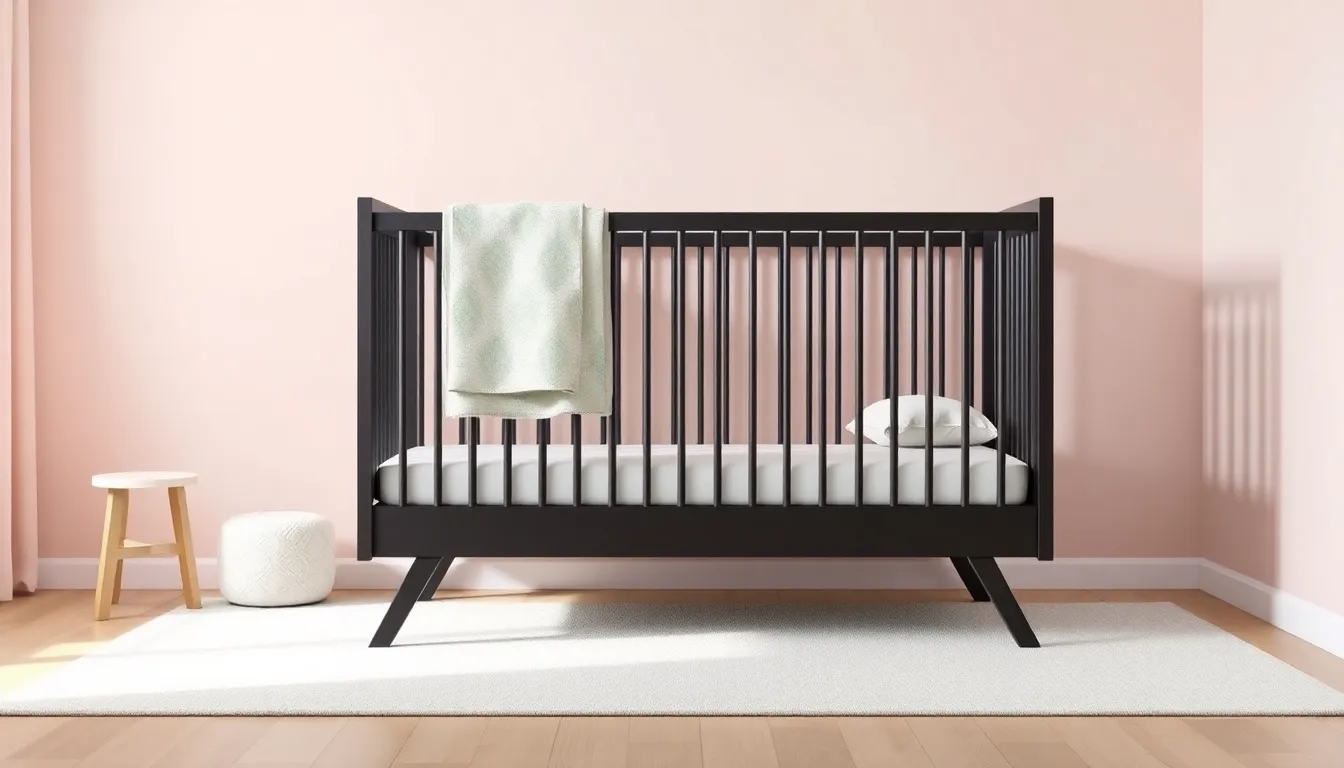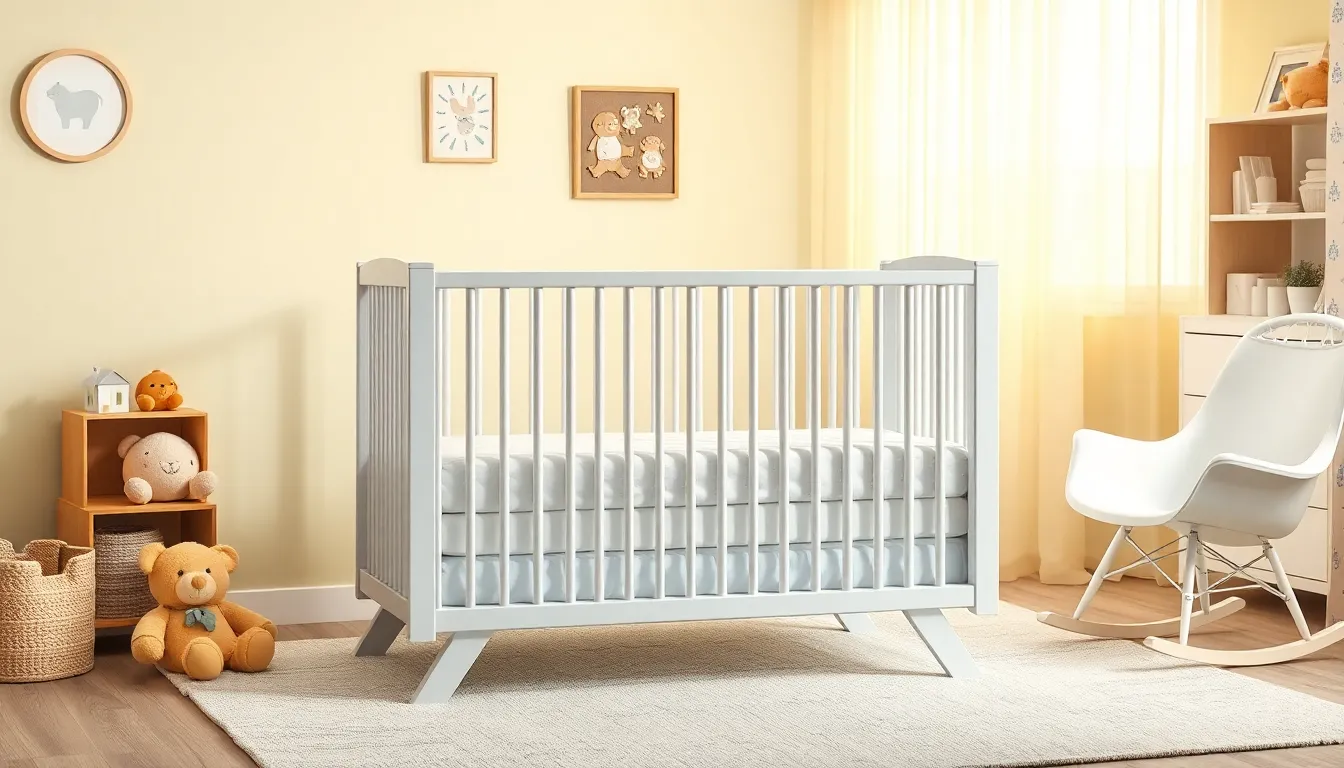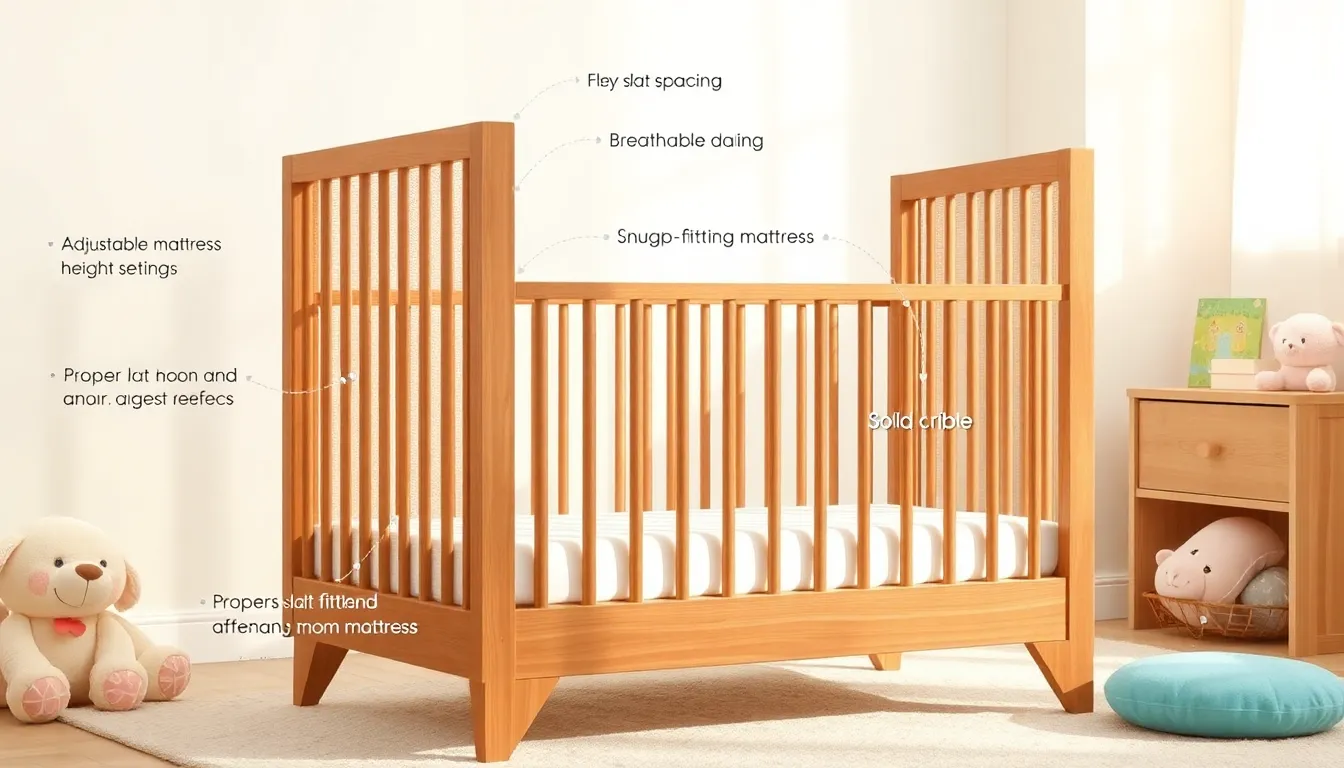Table of Contents
ToggleWhen it comes to baby gear, parents want the best for their little ones, and a crib is no exception. It’s not just a piece of furniture; it’s a sanctuary where dreams are made and naps are taken. But with so many options out there, how do parents choose a crib that’s safe and sound?
Importance Of Safe Crib Features
Safe crib features play a crucial role in ensuring a secure sleeping environment for infants. Parents must recognize that proper crib design significantly reduces the risk of accidents. Safety concerns include things like gaps between slats and the height of the crib mattress.
Cribs built to safety standards can prevent serious injuries. Features like adjustable mattress heights contribute to a safer experience for parents and children alike. Standards set by organizations such as the Consumer Product Safety Commission help guide manufacturers in creating safer products.
Materials used in crib construction matter greatly. Non-toxic finishes and strong, durable wood enhance safety and longevity. Parents should always check for certifications that indicate compliance with safety regulations.
Proper ventilation also contributes to a safe sleeping environment. Cribs with well-placed slats promote airflow, reducing the risk of suffocation. Safety bumps or rounded edges minimize the chances of injury during playtime.
Additional features like drop-side mechanisms raise safety concerns. Choosing cribs without these mechanisms can eliminate potential hazards associated with moving parts. It’s essential to prioritize cribs that feature sturdy, fixed sides for maximum stability.
One should also consider the longevity of the crib. Many models convert from cribs to toddler beds, extending usability. Cribs that grow with the child offer not just convenience but also added safety benefits.
By carefully considering safe crib features, parents can ensure their baby sleeps in a secure and comfortable environment. Investing time in selecting the right crib reduces future worries and promotes a peaceful sleep for both the baby and parents.
Key Safety Standards



Safe crib features rely heavily on established safety standards. These standards ensure the protection of infants during sleep.
ASTM and CPSC Regulations
ASTM International and the Consumer Product Safety Commission (CPSC) set vital regulations for crib safety. ASTM focuses on establishing uniform safety specifications that cribs must meet. CPSC regulation enforces compliance with safety laws, addressing issues like slat spacing and stability. Compliance with these organizations significantly reduces risks of accidents. Cribs manufactured after June 2011 reflect these updated guidelines, eliminating hazardous drop-side mechanisms. Adhering to standards also guarantees cribs undergo rigorous testing, ensuring they maintain safety during everyday use.
Certifications to Look For
Certifications indicate a crib’s compliance with safety standards. Seek cribs endorsed by recognized organizations like the Juvenile Products Manufacturers Association (JPMA). JPMA-approved cribs have passed comprehensive safety evaluations. Look for labels that specify compliance with ASTM and CPSC standards. This verification boosts confidence in the product’s design and materials. Additionally, cribs certified by third-party testing agencies offer extra assurance of safety and performance. Familiarizing with these certifications equips parents to make informed decisions when selecting a crib for their baby.
Essential Safe Crib Features
Safe crib features create a secure sleeping environment for infants. Parents should prioritize these characteristics for their baby’s safety.
Sturdy Construction
Sturdy construction ensures stability and durability. Cribs must include solid frames made from high-quality materials. A well-constructed crib reduces the risk of collapsing or tipping over. Additional safety components provide extra support, contributing to overall safety. The American Academy of Pediatrics recommends verifying that cribs comply with safety standards set by organizations like the CPSC.
Non-toxic Materials
Non-toxic materials play a vital role in crib safety. Parents should select cribs made from environmentally friendly wood and finishes. Certifications from recognized bodies indicate that materials are free from harmful chemicals. Cribs constructed without toxic substances protect infants from respiratory issues and allergies. Additionally, parents can look for paints and varnishes labeled as zero-VOC to enhance safety.
Adjustable Mattress Heights
Adjustable mattress heights accommodate a growing baby’s needs. Cribs with multiple height settings allow parents to lower the mattress as the child learns to stand up. This feature helps prevent falls while ensuring convenience for caregivers. Parents appreciate how adjustable settings provide easy access for placing or lifting infants. A crib that can adapt to the baby’s development creates a safer sleeping space.
Breathable Mattress Design
Breathable mattress design promotes airflow and reduces overheating. Cribs equipped with breathable mattresses help maintain a comfortable temperature for infants. Proper ventilation prevents moisture buildup, which can lead to mold growth. High-quality mattresses featuring hypoallergenic materials further enhance safety and comfort. Parents should always check for labels that indicate the mattress is breathable for added peace of mind.
Additional Safety Considerations
Certain factors further enhance crib safety. Parents must consider aspects beyond standard features to ensure a secure sleeping environment for their infants.
Avoiding Drop-Side Cribs
Drop-side cribs pose significant safety risks. These cribs contain a side that moves up and down for easy access but can lead to entrapment or falls. Cribs manufactured after June 2011 comply with safety regulations that prohibit drop-side designs. Prioritizing cribs without this feature provides peace of mind. Examining recalls on older models helps identify any potential hazards. Seek cribs with fixed sides that maintain structural integrity, ensuring a stable sleeping area for the baby.
Proper Bedding Choices
Choosing the right bedding is essential for crib safety. Fitted sheets designed specifically for cribs decrease the risk of suffocation and entrapment. Avoid fluffy blankets, toys, or pillows in the crib as these increase the chance of hazards. Instead, use lightweight sleep sacks or wearable blankets to keep infants warm without compromising safety. Selecting breathable materials enhances airflow and minimizes overheating. Always ensure the mattress fits snugly within the crib frame, eliminating gaps where a baby could slide.




